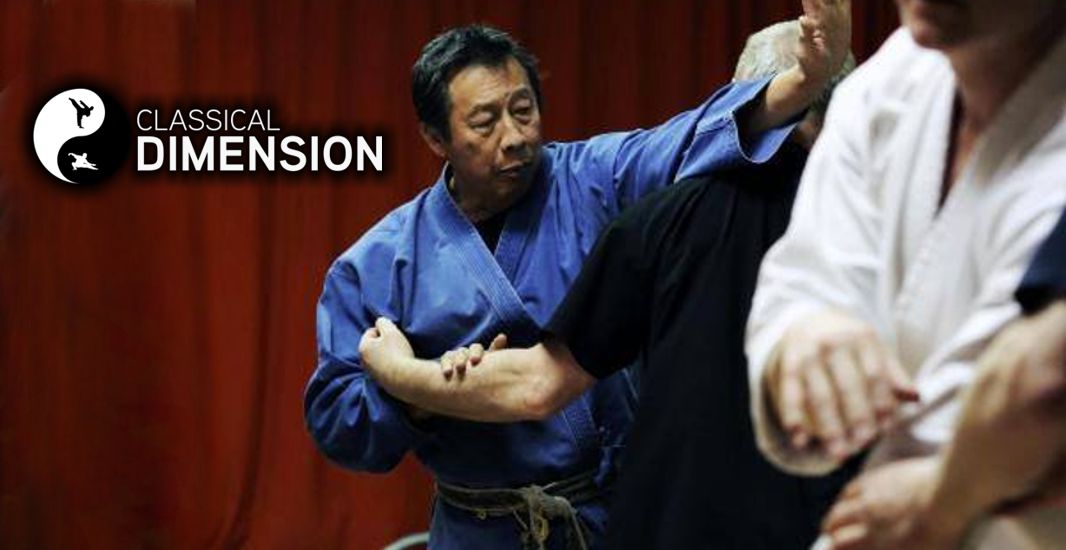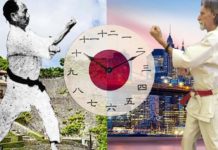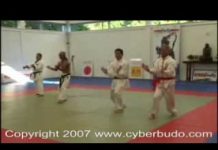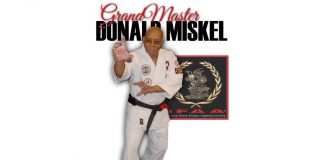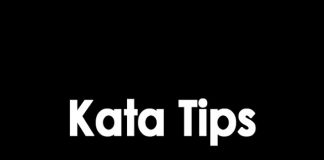Willie Lim likes nothing better than to unlock martial arts truths. He is demystifying martial arts, shattering illusions that many would like to keep in place, sometimes stepping on toes as he does so.
The master magician is a controversial figure who has ripped the magic circle apart with his revelations. A superb showman, he stages elaborate illusions, amazes us, then piece by piece dissects the illusion to show us how it’s done. Love him for his honesty or hate him for shattering our fantasies, he is compelling television.
After watching a Willie Lim seminar I could not help but draw comparisons. Willie is a charismatic performer, an articulate charmer who knows how to capture his audience as he divulges his box of tricks. Just as you are in awe of him, he reveals the simple principles that makes it all seem so easy. That is his magic and his mischief. Willie Lim likes nothing better than to unlock martial arts truths. He is demystifying martial arts, shattering illusions that many would like to keep in place, sometimes stepping on toes as he does so. Whether he’s telling you he’s allergic to Koreans or explaining how he got out of Master Wally Jay’s infamous “chicken-wing”, Willie does it with a knowing wink and a smile, reminding you that these myths are often in place for purely financial reasons.
Willie should know. Now affiliated to no organization, ten years ago Willie was traveling the commercial path of big schools and marketing his high-profile name and “secrets” for big money. Suffering burn-out he took up Tai-Chi and gained a new lease on life and love for the arts he practiced. His seminars are often as much talk as action, it’s important to him that they know where he’s coming from. His angle is the reality of truth, proven truth”. The most important thing is to know a person for what he is, because I work on their word. Some people don’t exemplify the integrity, honesty and decency of the arts.”
Delving past the mysticism and fantastic claims that are often simply glorified advertisements for a specific art, Willie illustrates the simple physics that disprove the philosophy “this is the only way this can be done.” With a total disdain for “closed door” policies, Willie want you to take away one thought form his seminars, to retain an open mind as there is no finality to any art. He uses a simple analogy to press home his purpose. Many can show you how to break down a door that is an obstacle in your way. Willie would rather give you the keys to unlock it.
Willie, why did you start in the martial arts?
It was basically for self-defense in those times. The first style I did was Kyo Kushinkai and my teacher was also a very good judo teacher and so it was very rough and tumble. I got injured all the time so I started on Tai-Chi, the teacher at the time was an herbalist and looked after me. So I did the two together in Penang, Malaysia and from there I went to Taekwondo with Choi Chun Kim, one of the better names from the early days. “The Rubber Man” they called him. When I was in Malaysia we did the teaching for the Koreans most of the time. Were we taught a lot? No. a lot of it you learned yourself. What was taught then and what is taught now, is like night and day. I’m not saying that we had it better than the other, simply that we moved on , evolved.
What about early influences on you?
I would say there were not many at that time because when you are young you are attracted to the physical ability of someone. When you are down looking up, everyone is impressive. When you are up looking down, you can tell the lies from the truth. What they “sell” is purely the physical arts and I guess that’s what I was like as a teacher in the early days too. I got stale with what I was doing and reached a burn-out situation. Six classes a day, five days a week, it’s a profession an at the end of the day all the figures have to tally and that’s when I got sick of the art.
Isn’t it a wrench leaving the prestige of big classes and constant financial security?
No, I’ve had enough of that, I’ve had my big schools and now I’m freelancing. I can go anywhere I like (New Zealand, Canada, Australia, Finland, Ireland) and share with people things that I believe. If they take it on board then I have imparted some of my knowledge and if they move on from there then I have succeeded If you knew me ten years ago I was not like that but it’s about growing up, evolving, and understanding that at the end of the day our realities are different. If we can sit and talk as friends, even if we have different systems, that’s important. with all the organizations that we have fighting, if they would work together, my God what we could achieve. It’s and ideal but it starts with one person.
Your views have not always been accepted and as such you’re a controversial figure.
Perhaps that was too early for a lot of them. If you look at the physical styles in the late sixties, early seventies, you could see who was a Karate stylist, Taekwondo, Kung-Fu. Now you go to a tournament and they all look the same. so now people are more open, they mix, and at the end of the day which club they choose is due to location. when I was doing Taekwondo I was a pioneer for the ITF at that time and I brought a lot of different stylists including Benny The Jet, Wally Jay, Hee II Cho and all of those people had something to offer. Sometimes you have to go outside your own art and then you will appreciate your own system for what it is.
You are known for Taekwondo. With your wealth of knowledge now, is it still an effective art?
Taekwondo has a lot to offer, without doubt. It is a very beautiful art to look at and vey dynamic. You have to take what you want from it. It is still a very good system of self-defense if you know what you are doing. It is the person that makes the art. I can give you all the tools, implements, but you have to make it work for you. At the end of the day you have to analyse how desperate you are to defend yourself.
Hasn’t the art become a player’s sport now?
I would say it is more so of the WTF system. My own opinion is that it is the Koreans pushing the Olympic element. They cannot market the art for what they are selling because the average Taekwondo instructor is non-Korean and has moved past the Korean approach and offers a lot more than than the Korean instructor. So that is a gimmicky way of selling. I need to chip away slowly so that they see another side of the art, so that Taekwondo as we know it has room for the older groups. It is for all as long as you meet the right people who know what Taekwondo is.
What about the new Ultimate fighting arts?
There is no such thing. Even Gracie Jiu-Jitsu, they can lose. They have a lot to offer, especially in ground fighting They are top at what they do. If I were young and robust at this time I would go into Jiu-Jitsu, definitely. A lot of people when they are younger go for the flamboyant and with Kali, Escrima, Arnis, they see people with sticks waving their arms about and the average man doesn’t know the difference. Sometimes what attracts is not really the art. As we get older and analyze more and get more receptive we think “wow” what we saw and what it is today is different. Ten years ago down the road the same art changes again. People don’t understand that.
As mentioned earlier maturity has changed your teaching approach.
I teach people to use the principles to bring their own art to a different level. I don’t teach them Tai-Chi, I teach them principles. I share with them what I call the old ways so they can see their own art for what it is. Throw away eighty percent of what I say, take twenty percent, that’s all I ask but everyone has to be honest because at the end of the day that is lacking a lot. That’s the sad part. We get so engrossed in what we do that we are not prepared to look at anything. What I do is “bunkai”, or the application of the art. They all know bunkai as a block, kick, punch. well, if that’s bunkai then it is a very sad state. Other arts have moved on but the martial arts have regressed, people don’t even know their real art. Those that know me well enough know I say we are a product of a watered down system.
Could you expand on that?
The real application of the art has never been taught because young people went into the art in the early days in Japan and it became a University thing, more strength and more strength. Look back at the history of the arts, the masters are old people. Masters at twenty, thirty? It is not possible. It is a marketing ploy. I want to show people that if you are not a sport player there is room for you. At the end of the day there is self defense if you know what the art is. We cannot all be doing the same thing all around the world.
You are equally skeptical about Tai-Chi, which is a passion for you.
Real Tai-Chi is hard to find. When I was young I was doing slow Karate not Tai-Chi. It’s learning how the center moves, the body moves, how all the joints align. Where your area of strength comes from. You can talk about Tai-Chi energy but if I look at you and see that your alignment is out I am not worried what you call yourself or what your credentials are. It is physics at its finest, which is in any art. Quite frankly and honestly I can say that ninety nine percent of the people who teach Tai-Chi are doing the movements. they don’t have a clue what Tai-Chi is. What is marketed and what is real?
What do you mean by that?
What is real is not shared with anyone. This is the sad part and this is how life is. If you have a diamond in your hand you don’t say “hey, everyone have a piece of this.” No way! I’m not saying I’m there yet, but I have been lucky enough, through a contact of mine of over thirty years who was also a professional martial artist, introduced me to his teacher. I asked him why and he said, “when you and I talk of Tai-Chi Willie, we are talking about the same thing.” I have never looked back from that day. It was the best thing that happened to me.
A final thought for the readers.
It doesn’t mean that your background has gone, no. My teacher told me if you refine everything, what you had is not thrown away. It pulls it to a different height. That is why I am enjoying the art so much, because of my understanding of it today.
And I’ve enjoyed talking with you Willie.
Thank you.

